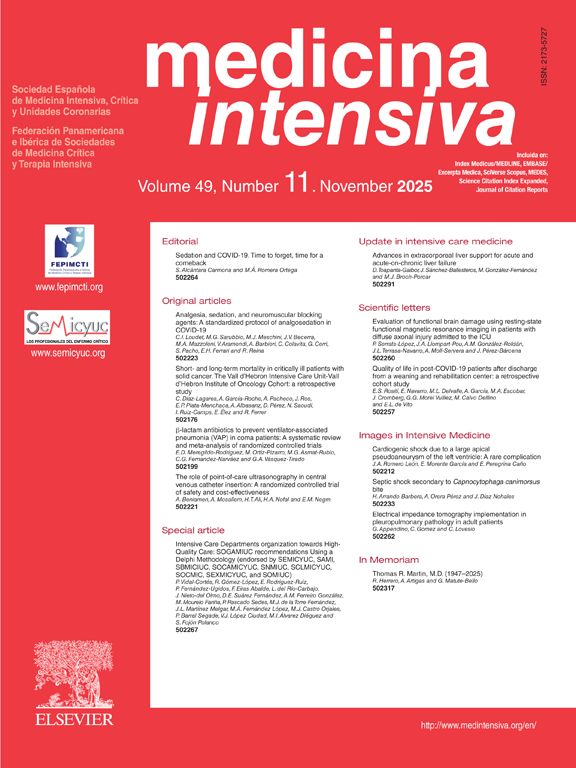Emergency care departments are a point of confluence of users and professionals, each of which have a different perception of the patient needs. At present there is great controversy between those who favor patient-centered care, defending the presence of relatives or accompanying persons at all times as advocated by Sutton et al.1 and those who believe that in certain moments of emergency care it is best for both the professionals and the patients not to have such people present, as commented by Blättler et al.2
In order to contribute evidence in this regard, a survey was conducted in the Emergency Care Ward of León University Hospital Complex (León, Spain), in which 51 nurses and 31 nursing assistants answered a customized questionnaire (PPEUCAB).
The questionnaires reflected strong agreement, with no differences in terms of gender, age, professional category or years of experience, referred to the two factors analyzed: negative consequences of the presence of accompanying persons, with a mean score of over 4.5 (scale from 1 to 5), and benefits of the presence of a single accompanying person, with a mean score of around 3.5. These results are similar to those published by Bañares,3 who pointed out that the presence of relatives does not benefit patients nor facilitate the work of the nursing staff, as well as to those of a study carried out in the Gran Canaria (the Canary Islands), where the nurses claimed that accompanying persons interrupt or delay their work and make it difficult for the patient to rest.4
It would be interesting to know whether these opinions are also found in other contexts—other emergency care units with both similar (free access of accompanying persons) and different organizational structures (access closed to the public)—and other perspectives (other professionals, such as physicians or hospital attendants).
In any case, the results do clearly indicate a perceived need to find solutions to the current problem posed by the strong presence of accompanying persons in the Emergency Care Ward of León University Hospital Complex. Despite their opinion contrary to the presence of accompanying persons, the professionals are also aware of the needs of the patients and propose different solutions to the problem. In order to describe them, a qualitative analysis was made of the answers to the only open item in the questionnaire, requesting information about possible solutions. The nurses consider that the best solutions are to periodically inform the accompanying persons in a room established for this purpose, and to close the emergency care unit to the public. In turn, the nursing assistants favor control of the accompanying persons, allowing the presence of a single individual per patient.
The solutions therefore would involve remodeling the Emergency Care Area to allow control of the access doors, allowing the presence of a single identified accompanying person, and adapting an area to periodically inform the patient relatives. These measures, which evidently imply a certain cost, would allow more efficient assistance, even from the economical perspective—since fewer interruptions also result in a shortened stay in the unit and therefore lesser costs.
Please cite this article as: Ferreras González MC, López-Aguado M. Percepción de las enfermeras de la Unidad de Urgencias del Complejo Asistencial Universitario de León sobre la presencia de acompañantes en los boxes de adultos. Med Intensiva. 2017;41:575–576.




